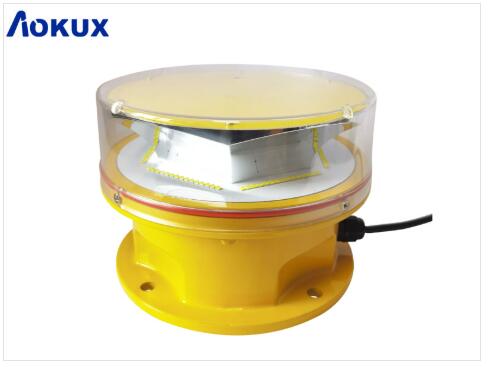Tower aviation lights are critical components in ensuring the safety of aircraft, especially during low visibility conditions. These lights serve as visual markers for tall structures, such as communication towers, wind turbines, and skyscrapers, helping pilots navigate safely. This article explores the importance, types, regulations, and technological advancements in tower aviation light systems.
The Importance of Tower Aviation Light
Aviation obstruction lighting is mandated by international and national aviation authorities to prevent collisions between aircraft and tall structures. Without proper illumination, towers and other high-rise structures pose significant risks, particularly at night or in adverse weather conditions.
Key benefits of tower aviation light systems include:
Improved Visibility: Ensures pilots can identify obstacles from a distance.
Regulatory Compliance: Meets standards set by organizations like the FAA (Federal Aviation Administration) and ICAO (International Civil Aviation Organization).

Accident Prevention: Reduces the likelihood of mid-air and ground collisions.
Types of Tower Aviation Light
Different structures require varying lighting solutions based on height, location, and purpose. The main types include:
1. Red Obstruction Lights
Used for structures between 45-150 meters.
Steady-burning or flashing red lights ensure visibility.
Common on telecom towers and power line masts.
2. White Strobe Lights
Typically installed on structures exceeding 150 meters.
High-intensity flashing white lights enhance daytime visibility.
Often used on skyscrapers and wind turbines.
3. Dual Lighting Systems
Combine red and white lights for optimal visibility in all conditions.
Required for extremely tall structures (e.g., broadcast towers).
Regulations and Standards
Tower aviation light systems must adhere to strict guidelines to ensure uniformity and effectiveness. Key regulatory bodies include:
FAA (Federal Aviation Administration): Specifies lighting requirements under AC 70/7460-1L.
ICAO (International Civil Aviation Organization): Provides global standards for obstruction lighting.
EASA (European Union Aviation Safety Agency): Regulates aviation lighting in Europe.
Compliance ensures that lights are properly spaced, bright enough, and synchronized to avoid confusion for pilots.
Technological Advancements
Modern tower aviation light systems incorporate innovative technologies to improve efficiency and reliability:
1. LED Lighting
Energy-efficient and long-lasting compared to traditional incandescent bulbs.
Lower maintenance costs and higher brightness levels.
2. Solar-Powered Systems
Ideal for remote locations without direct power access.
Environmentally friendly and cost-effective over time.
3. Smart Monitoring Systems
Real-time diagnostics and remote control capabilities.
Alerts for malfunctioning lights, ensuring continuous operation.
4. Adaptive Lighting
Adjusts intensity based on ambient light conditions.
Reduces light pollution while maintaining safety.
Challenges and Solutions
Despite advancements, some challenges persist in tower aviation light implementation:
Light Pollution: Excessive brightness can affect nearby communities.
Solution: Use shielded fixtures and adaptive lighting controls.
Maintenance Difficulties: High-altitude lights require specialized servicing.
Solution: Durable LED systems and remote monitoring reduce manual inspections.
Weather Resistance: Harsh conditions can damage lighting systems.
Solution: Corrosion-resistant materials and robust designs improve longevity.
Future Trends in Tower Aviation Light
The aviation lighting industry continues to evolve with emerging trends:
Integration with Air Traffic Systems: Synchronizing lights with radar and GPS for enhanced navigation.
AI-Powered Predictive Maintenance: Using machine learning to anticipate failures before they occur.
Wireless Connectivity: Enabling seamless communication between lighting systems and control centers.
Tower aviation light systems play an indispensable role in aviation safety, ensuring that tall structures remain visible to pilots at all times. With advancements in LED technology, solar power, and smart monitoring, these systems are becoming more efficient and sustainable. Compliance with international regulations and ongoing innovation will further enhance their effectiveness, contributing to safer skies worldwide.
By investing in modern tower aviation light solutions, industries can mitigate risks, improve operational reliability, and support global aviation safety standards.

